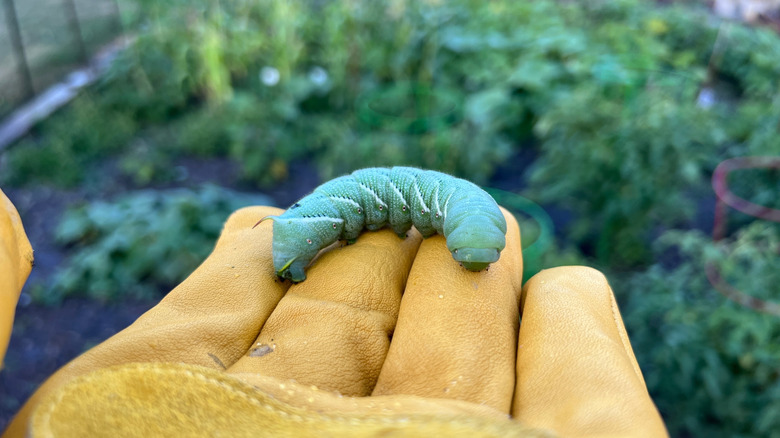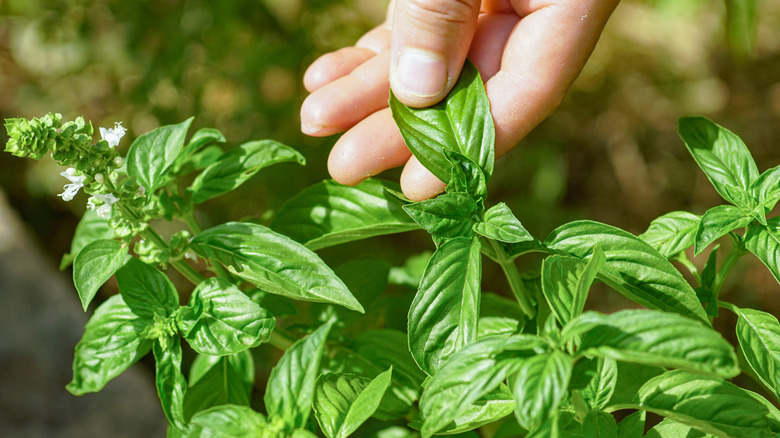The Companion Herb That Can Naturally Deter Hornworms From Your Tomato Plants
When it comes to growing your own produce, tomatoes are often at the top of the list. Unfortunately, these delicious red fruits have their share of pests, including the dreaded spotted tomato hornworm. Eventually transforming into five-spotted hawk moths, hornworms can make quick work of your tomatoes, feeding on the leaves as well as the fruit. You can combat their attack by growing companion plants next to tomatoes in your garden, and one of the easiest to grow is common basil (Ocimum basilicum).
Yes, not only are tomatoes a great accompaniment to basil in your homemade sauce, they're also great with basil in a garden! Boasting aromatic leaves, basil has a notable natural way of repelling pests, including hornworms. Its smell confuses the pests to deter them from their favorite meal: tomatoes. Basil can also attract beneficial insects, such as the green lacewing, which regularly eats hornworm eggs. In addition, while not scientifically proven, some farmers also believe that planting basil improves tomatoes' taste.
Hornworm larvae are capable of eating more than four times their body weight in leaves and fruit each day. It can be hard to see them since they blend in with the leaves, giving them ample opportunity to devour your plants. If an infestation is present in your garden, they'll start with the upper foliage, and then begin moving to the lower leaves. In some cases, the larvae can defoliate the tomatoes, entirely stripping your plant of its leaves and creating a risk of sunscald on the fruit. If you want to add basil as a companion plant, here's how to get started in your garden.
Growing basil as a tomato companion plant
As one of the main herbs you should grow in the garden with tomatoes, basil is very easy to start and thrives with six to eight hours of sun daily. It's best planted in moist but well-draining soil with a pH of 6 to 7. For container gardening, you can plant the basil directly with the tomatoes, provided you add only one basil plant so they don't compete for resources. When growing in the ground, allow for two to three basil plants per tomato plant, keeping the seeds at least 12 inches from the base of the tomatoes when you sow them. Proper spacing encourages airflow, reducing the risk of fungal diseases.
Water your basil every seven to 10 days, with adjustments for rainfall. As they germinate, thin your basil seedlings to only the healthiest two or three, potting the extra to grow elsewhere.
While your basil should keep hornworms from destroying your tomatoes, monitor both plants regularly for pests and disease. Ensure you water only the roots to avoid wetting the foliage, which increases the chance of fungal disease development. Aphids and spider mites commonly affect tomatoes, so be vigilant for any symptoms of infestation. Basil can fall prey to bacterial wilt, and you should avoid planting it in any soil with a previous history of the disease in tomatoes. Basil can also have outbreaks of downy mildew, which is spread by spores in the wind. Infection signs include yellowing leaves and the formation of small brown spots. Another disease to watch for is late blight, which may affect tomatoes, resulting in irregular lesions and a white, cottony growth.

